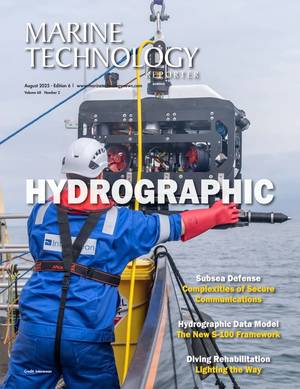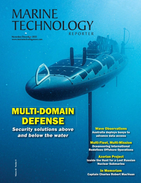Whale Fecal Samples Link Ocean Warming to Rising Algal Toxins in Arctic Waters
Rising toxins found in bowhead whales, harvested for subsistence purposes by Alaska Native communities, reveal that ocean warming is causing higher concentrations of algal toxins in Arctic food webs, according to new research published in the journal Nature.
Researchers from the Woods Hole Oceanographic Institution (WHOI) were a part of the multi-institutional, multi-year study that focused on this critical issue, which threatens food security for coastal communities that rely on marine life, including clams, fish, and whales, for food and other resources. Communities in Alaska are now asking researchers to help them understand and monitor the emergence of algal toxins in the Arctic ecosystems that they depend on.
“Native communities know intimately the ecosystems they rely on and were among the first to recognize the effects of warming,” said Raphaela Stimmelmayr, a wildlife veterinarian with the North Slope Borough in Barrow, Alaska, and a coauthor of the new research. She said the communities now need reliable tools such as field tests, so they can test for the presence of algal toxins in traditional foods in real-time. These tests, as well as information from monitoring programs and instruments, also help them make informed decisions on whether the marine mammals or other marine wildlife—such as clams, fish, and birds—are safe to eat.
“It is very difficult to walk away from resources that they need and have relied on since time immemorial,” she said.
Kathi Lefebvre, a research scientist at NOAA Fisheries’ Northwest Fisheries Science Center in Seattle and lead author of the new study, also leads the Wildlife Algal-toxin Research and Response Network for the U.S. West Coast. This alliance of agencies and institutions collects wildlife tissue samples from as far North as the Beaufort Sea in Alaska to Southern California. Members then send the samples to her Seattle lab to test for the presence of algal toxins. The lab’s early work found that many species in Alaska had evidence of exposure, although not at levels high enough to be considered harmful to the animals sampled.
Over two decades, the lab regularly tested bowhead whales harvested during annual fall subsistence hunts in the Beaufort Sea off the North Slope of Alaska. The whales filter seawater for their food, consuming krill that contain algal toxins acquired from the food web. The research team realized that fecal samples from the whales could reveal toxins in the marine environment the whales depend on.
“Nobody had a data set like this,” Lefebvre said. “Instead of going out every year and collecting samples across the marine environment, the whales did it for us. Their samples give us a snapshot of what is in the food web every year, as sampled by the whales.”
After testing 205 bowhead whales over 19 years from 2004 to 2022, the team decided they had enough data to look for changes over time. In particular, they wanted to track the concentrations of domoic acid, produced by a marine algae called Pseudo-nitzschia, and saxitoxin, produced by Alexandrium.
They found saxitoxin in at least half to 100% of the bowhead whales sampled each year over 19 years. While domoic acid was less prevalent (in some years no DA was detected), this study shows for the first time that domoic acid exposures in Arctic waters are increasing due to warming and loss of sea ice.
Scientists used data from a monitoring mooring in the Beaufort Sea, funded by the National Science foundation’s Arctic Observing Network, to compare toxins in the bowhead whales to environmental conditions. “It was fortuitous that we’ve maintained a long-term mooring near the whale feeding site, which provided the opportunity to investigate the role of the changing circulation and water properties over this two-decade period,” said WHOI senior scientist Bob Pickart. The researchers found that periods of increased toxicity in the whales were associated with enhanced northward heat flux, which in turn was driven by specific wind patterns.
These warmer conditions are more favorable for HAB growth and are correlated with higher toxin concentrations in the food web. Atmospheric conditions thus influence the oceanography which in turn influences the HAB dynamics.
They also used climate data to compare the bowhead samples to changes in sea ice. Sea ice historically covered large sections of the Arctic but has radically declined in recent decades. When there is less sea ice, sunlight warms the ocean more quickly and algae grow faster. Years with the largest reductions in sea ice cover in June led to warmer water in July. This boosted the odds of HABs and rising toxin levels in the whales. Warmer ocean conditions and loss of sea ice are all linked to higher toxin levels in the food web.
This extensive research was accomplished through decades of collaboration among researchers from tribal, state, and federal governments, academic institutions, and private organizations. Arctic science is best when there is teamwork amongst Native and western science. The research team included specialists in Arctic traditional ecological knowledge, oceanography, climatology, HABs, food web ecology, and experts in bowhead whale health and ecology. These researchers were able to fill in a piece of the Arctic HAB risk puzzle. This study confirms the need for continued and increased monitoring of HAB risks to food security and food safety of marine subsistence resources used by rural Alaskan communities.

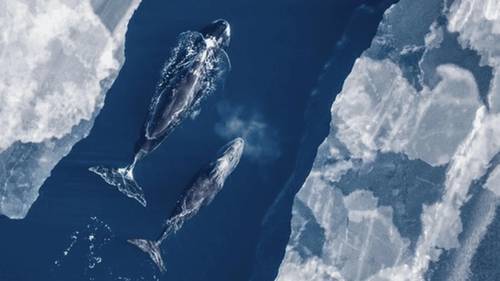

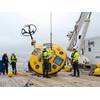



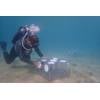





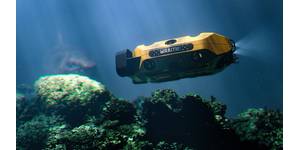
 August 2025
August 2025
